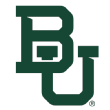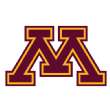Some new teams outside of the regular blue bloods have pushed their way into the AP Top 25, such as SMU, Baylor and Cincinnati. LSU is No. 1 in the poll for the first time since 2011.
Several teams have been on the rise, and all of them have built their programs in different ways through recruiting.
Here is a look at some of the surprise teams this season and how they were built on the recruiting trail.

1. LSU
The Tigers have always recruited well, but their rise in the rankings on the field is what has surprised many. Currently sitting atop the AP poll, LSU earned its biggest recruiting win for its current roster by landing transfer quarterback Joe Burrow. He wasn't a high school prospect who committed to LSU, but landing an elite transfer has to be considered a recruiting win in this landscape.
Outside of Burrow, LSU has averaged a recruiting class ranking of 8.2 over the past five classes. The lowest came in 2018 when the Tigers had the No. 14-ranked class, and the highest ranking was in 2016 with the third-best class overall.
During that time period, LSU has landed 68 ESPN 300 recruits, but the 2017 class is where LSU is receiving the most production this season.
Of the 15 ESPN 300 prospects in that 2017 class, nine are currently starting or contributing to this team, including running back Clyde Edwards-Helaire, defensive lineman Tyler Shelvin, linebackers K'Lavon Chaisson and Jacob Phillips, and defensive backs Grant Delpit and Jacoby Stevens. That number of contributors would have been 10, but safety Todd Harris Jr. is injured and out for the season. That is an exceptional rate of success for the top recruits in one class.
The 2016 class has four major contributors as fourth-year players, and the important production those two classes are providing LSU makes it easier on the coaches, who don't need to rely on younger players from the 2018 and 2019 classes, which could in turn give the program more time to develop in the future.

7. Oregon
The Ducks' success on the field paired with the coaching staff's recent ascension in the recruiting rankings should give Oregon fans some optimism for the future. In 2015, Oregon had the No. 15-ranked recruiting class, followed by Nos. 32 and 23 before bumping up to the No. 17-ranked class in 2018 and the No. 6 class in 2019.
That trajectory in the rankings combined with the success on the field is a good combination for building a healthy program as long as Mario Cristobal can continue the trajectory in both areas, especially considering who is contributing to this team.
Of the starters and major contributors, 12 are from the 2015 and 2016 classes, including quarterback Justin Herbert, three offensive linemen and linebacker Bryson Young, among others. That is a lot of fourth- and fifth-year players contributing, but diving deeper into those numbers, none was ranked in the ESPN 300 and nine were three-stars.
So Oregon is getting maximum output and development from former three-stars and playing at a high level. To add into that, the coaches are starting to get some help from their most recent high-end recruits, including the No. 1 overall prospect in 2019, defensive end Kayvon Thibodeaux, and fellow 2019 signees Mase Funa, Mycah Pittman and Mykael Wright.
If these coaches can get the same type of development out of the most recent ESPN 300 signees as they have from the veteran players, this team could continue to be very good in the future.

9. Utah
As you would imagine, Utah's recruiting numbers look much different from LSU's or Oregon's, which makes it that much more impressive that the Utes find themselves ranked inside the top 10 of the AP poll.
Utah hasn't had a recruiting class ranked higher than 38th over the past five classes and has been ranked as low as 59th most recently in 2019. That isn't to say the Utah coaches are bad recruiters, because ultimately it's about developing the talent they get and doing as much as possible with it. In that regard, Utah's coaches should be viewed as good recruiters for being able to find the right prospects and turning their recruiting efforts into the No. 9 team in the country.
The team's leading rusher, Zack Moss, who ranks 27th in rush yards and 11th in rushing touchdowns among all FBS players, was a three-star prospect in the 2016 class. Defensive end Bradlee Anae, who ranks 14th nationally with seven sacks, was not ranked in the 2016 class and had offers from only Utah, BYU, Hawaii, Oregon State, Vanderbilt and Virginia.
The list can go on for Utah's contributors, which demonstrates that the coaches have been able to build this team with under-recruited prospects. The team is made up of four ESPN 300 prospects and 16 four-stars among the past five recruiting classes, which is far fewer than are found on most of the other teams in the top 10 of the AP rankings.

12. Baylor
When Matt Rhule was hired at Baylor from Temple, he knew he needed to get the Texas high school football coaches on his side. He did an excellent job of welcoming the high school coaches to his program, making sure he was assimilating himself into the culture, and even hired a few coaches with Texas ties, including Joey McGuire, who was the head coach at Cedar Hill High School for 14 seasons.
Rhule was smart about how he was building his program, and it has paid off this season. It goes beyond Baylor's record, which went from 1-11 in Rhule's first season to 7-6 in 2018 and now 7-0.
The current staff had recruiting classes ranked 39th in 2017, 24th in 2018 and 34th in 2019, and inherited players from the 2015 and 2016 classes that they have helped develop into the team Baylor is today. Some of those players the staff inherited include running back JaMycal Hasty, the team's second-leading rusher, who was an ESPN 300 recruit in the 2015 class, and leading receiver Denzel Mims, an ESPN 300 prospect from the 2016 class.
But the team's leading rusher, John Lovett, was a three-star from New Jersey in the 2017 class, Rhule's first class. Receiver Tyquan Thornton, second on the team in receiving yards and touchdowns, was a three-star in the 2018 class.
One of the first players to commit to Rhule after he was hired at Baylor was quarterback Charlie Brewer, who flipped his commitment from SMU and then-head coach Chad Morris, who is now at Arkansas. Brewer this season has thrown 12 touchdowns and three interceptions and ranks 12th among all FBS quarterbacks in passer efficiency on the season.
Rhule has stayed true to who he was at Temple and his previous stops, but has adapted to what he needs to build at Baylor and the talent he has around him in Texas. Landing nine ESPN 300 recruits from the state of Texas in the 2017, 2018 and 2019 classes, while mixing in some developmental prospects, he has been able to turn this program around and has it headed in the right direction.

13. Minnesota
P.J. Fleck has Minnesota off to its first 8-0 start since 1941. No pressure to this team, but when Minnesota went 8-0 in 1941 and the season prior in 1940, it won a national championship both years.
This program has been ascending since Fleck's arrival, similar to the way he was able to build Western Michigan. Minnesota started 5-7 its first season under Fleck in 2017, then improved to 7-6 in 2018 before now being undefeated and ranked in the top 15.
Minnesota's recruiting classes have steadily risen in the recruiting rankings, starting at No. 62 in 2015, 55 in 2016, 58 in 2017, 30 in 2018 and 39 in 2019. Fleck has been able to elevate the recruiting profile of Minnesota all while still landing the type of player he has had success with in the past. In his three recruiting classes so far from 2017 to 2019, Fleck and his staff have landed only eight four-star recruits, which should indicate how well his recruits are developed and scouted.
In Fleck's first class was quarterback Tanner Morgan, a three-star from Kentucky, who now has 1,761 passing yards and 18 touchdowns, which has him tied for 16th among all FBS quarterbacks in touchdowns thrown this season. Leading receiver Rashod Bateman was a three-star out of Georgia in the 2018 class and now has 644 receiving yards with six touchdowns.
Fleck also inherited some excellent players, including linebacker Carter Coughlin, defensive back Antoine Winfield Jr., running back Rodney Smith and receiver Tyler Johnson. The coaching staff has done an excellent job of getting the players to buy into the culture, developing the players who were already there and adding in recruiting pieces to supplement the holes to build the current product on the field.

15. SMU
SMU is a surprise in the polls, and a big part of what has helped this team get here has been recruiting the transfer portal. It was a smart decision by Sonny Dykes and his staff to supplement the roster with players who could help immediately.
The coaches took in 15 transfers before the season, including starting quarterback Shane Buechele from Texas, defensive tackle Zach Abercrumbia, leading tackler Richard McBryde, second-leading tackler Patrick Nelson and Brandon Stephens, who leads the team with eight pass breakups.
That's a lot of production from transfers, but it is still impressive that the staff has been able to put together the No. 15-ranked team based off of players cast off by other schools and recruiting classes that have not been ranked highly nationally. In fact, over the past five SMU recruiting classes, only two have made it into the top 65 (2016 and 2019).
Excluding the transfers, this program has signed only three four-stars from 2015 to 2019. One would be hard pressed to find any other team ranking this highly with that combination of recruiting rankings and transfers on its roster.

17. Cincinnati
Coach Luke Fickell has stayed the course with his program, building a foundation to where his team is now 6-1, its only loss coming to No. 3-ranked Ohio State.
Looking at the recruiting numbers, Fickell and his staff have done an excellent job getting the program to where it is now. From 2015 to 2018, the recruiting classes were ranked 65, 75, 75 and 41, and the Bearcats were not in the top 75 of the class rankings in 2019.
The team has signed only four recruits ranked as four-stars from 2015 to 2019, but is still in the top 25 of the AP poll. The staff has developed three-star running back Michael Warren; starting quarterback Desmond Ridder, who had only a Cincinnati offer and wasn't ranked; leading tackler Darrick Forrest, who had only four offers out of high school; and Ja'von Hicks, a wide receiver recruit out of high school who now leads the team in interceptions.
Fickell has done an excellent job finding the right players for his system and turning them into a complete team that trails only SMU in the American Athletic Conference.
